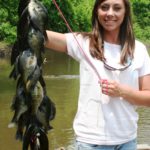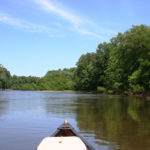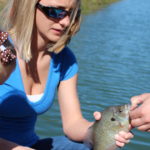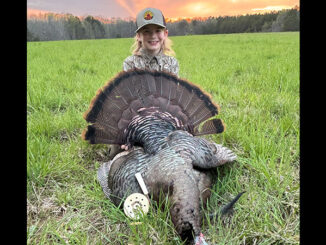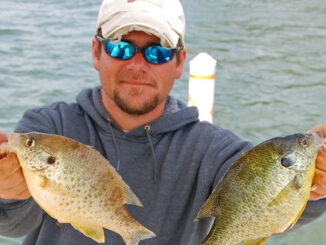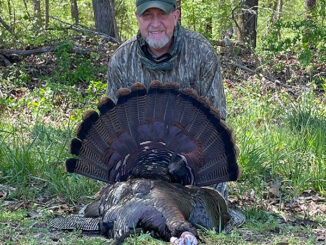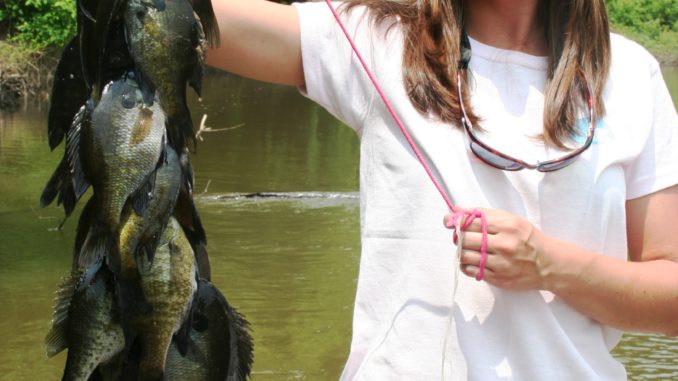
May brings the Little Pee Dee River’s sunfish species to the forefront. For a stringer full of bluegill, redbellies and shellcrackers, take this expert advice.
“Watch my cork this time,” Josh Devlin said as he threaded a fresh cricket onto a small hook while fishing on the Little Pee Dee River.
Devlin, who hails from Florence, lobbed out an easy catch with his ultralight spinning outfit, smiling from ear to ear with anticipation. The cork hit the water, and without so much as a hesitation on the surface, it went straight under as though it was a weight instead of a float. The bream bite was hot.
May is no stranger to hot bream bites, and the Little Pee Dee River is as good a place as any to find one. Even though the water is moving, it’s not too difficult to find bream, and when you say bream in this neck of the woods, you could be talking about any number of different species. Bluegill, redbreast, and shellcracker all live in this relatively slow-moving, skinny river that runs 116 miles through South Carolina’s Pee Dee region.
“Sunfish” is probably a more-correct term, but catching a mixed bag of all three species is so common that locals just refer to them collectively as bream.
Some anglers, like Devlin, find it easier to catch these fish in the Little Pee Dee than in lakes and ponds.
“It’s not difficult to find them here at all,” he said. “Every downed tree or cut in the bank is a potential spot, but they’ll even be in the middle of the river at times. And this river is so skinny in most parts that you can keep your boat in the middle and work both sides with a rod and reel.”
Even though these bream will do a lot of bedding in similar areas — and really close to each other — Devlin likes to focus on the bluegill and shellcracker.
“I love the redbreast, but they have taken a beating on this river over the years, and they are a bit more susceptible to any variations. Floods, droughts, and other fish species all seem to have an impact on the redbreast. I just prefer to let them alone and give them a chance to grow, so I mainly target bluegills and shellcracker,” he said.
One of the easiest places to find bluegills, Devlin said, is at points where the river slightly widens, especially just after a bend in the river.
“It doesn’t even have to widen very much. Just a slight widening will slow the current, and along the shoreline, the bream will make beds in big groups. Sometimes you’ll see them plain as day if you’re wearing good, polarized shades, but even when you can’t see them, fish areas like this. You’ll know pretty quick if the fish are there or not,” he said.
“Plenty of folks like using small spinners and tiny crankbaits, but I like using live bait. It just seems to me like pulling lures through those beds chases a good many of them off. I use crickets for bluegills. They just can’t resist them.”
Devlin suspends his crickets under slip corks, which allow him to change depths quickly and easily by simply sliding the knot up or down.
“I don’t like the round bobbers. I like the streamlined, slip corks. They cast easier and make less of a splash when they hit the water,” he said.
And once he finds bluegills, Devlin said shellcrackers are even easier to find.
“They like to bed nearby, and even though you will catch both species on crickets, and both species on worms, bluegills are more partial to eating crickets, and shellcracker like worms best,” said Devlin, who finds often finds shellcrackers bedding along the edges of bluegill beds.
“And unlike bluegills, shellcracker like to eat off the bottom. So, it’s crickets under corks in the middle of the beds, and nightcrawlers and catalpa worms on the bottom, along the edge of the big group of beds,” he said.
When targeting bluegills, Devlin uses a gold, No. 6 Tru-Turn hook, a small slip cork and two or three, Size BB pinch-on weights. He fishes with 6-pound line and an ultralight spinning combo.
For shellcracker, he uses the same rod-and-reel combo, hooks, and line, but he doesn’t use a cork. Instead he uses a Carolina rig with a 1/16-ounce bullet sinker, a small swivel and a leader of about 12 inches in length. This puts his bait on the bottom and allows him to drag it through the beds if he doesn’t get a bite right away.
The Little Pee Dee River varies in width from about 10 to 25 feet and in depth from 6 to 10 feet deep, so small, aluminum boats, canoes, one-man sneak boats and fishing kayaks are the norm here.
DESTINATION INFORMATION
HOW TO GET THERE — The Lumber River’s headwaters are in North Carolina; the stream crosses into South Carolina between US 76 and SC 9 near Nichols, then joins the Little Pee Dee River east of Mullins and forms the border between Marion and Horry counties until its confluence with the Pee Dee north of Georgetown. Two good boat ramps are at Gallivants Ferry of US 501 and Little Pee Dee State Park on State Park Road off SC 57 southeast of Dillon.
WHEN TO GO — May is the first month for a really hot bite on bream in the Little Pee Dee River, and action should be good through the summer, especially around full and new moons.
BEST TECHNIQUES — Fish near the banks, especially where the river widens, even slightly, and after bends in the river. Use crickets on No. 6 hooks under slip corks, 6-pound line, and ultralight rods and reels.
FISHING INFO/GUIDES — Lane’s Bait & Tackle, Dillon, 843-774-4477; Fishing Hole, Mullins, 843-464-2446; Rick’s Bait & Tackle, Conway, 843-488-2715; Little Pee Dee State Park, Dillon, 843-774-8872. Irby Street Sports, Florence, 843-665-6462.
ACCOMMODATIONS — Pee Dee Tourism, 843-669-0950, www.peedeetourism.com; Little Pee Dee State Park, 843-774-8872 has 32 campsites with full hook-ups and 18 tent campsites with water but no electricity.
MAPS — Delorme South Carolina Atlas & Gazetteer, 800-561-5105 www.delorme.com; Little Pee Dee State Park, www.southcarolinaparks.com/files/State%20Parks%20Files/Little%20PD/MapLittlePeeDee.pdf.

